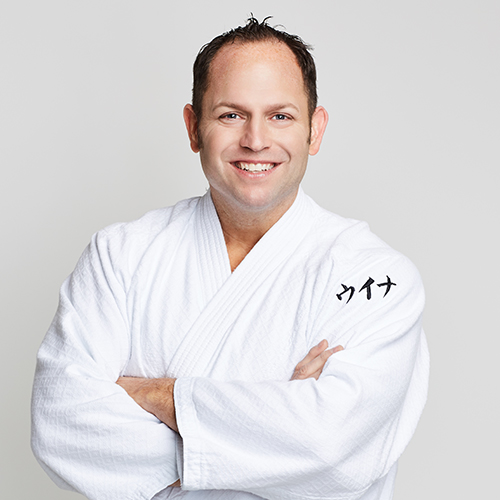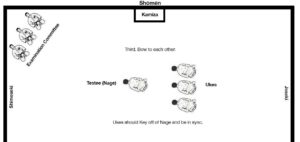Taking Ukemi for Sensei
One of the most fun, exciting, nerve-racking, and honoring feelings in Aikido is when you are called up to uke for the teacher. Whether it’s in class or a seminar — as someone who has done both for many Shihan over the years, I wanted to share some of what I have learned in that endeavor. Typically, when you’re called up by a gesture or name it’s because the teacher feels you have a strong understanding of ukemi. Meaning, you know how to attack correctly for demonstration purposes. You can manage meeting the mat. You are in good condition and you are relaxed. Sometimes, junior students and white belts may be called up. That is a good thing too. It usually means the teacher wants to give you that experience to learn from. In all those cases, here are some things to remember:
• Don’t be nervous. You are not being judged.
• Don’t keep the teacher waiting. Bow quickly and come up. (When you hear a clap, always focus your attention to the teacher, he/she may be looking at you before everyone finishes lining up.
• Make sure you are attacking correctly, especially for Kihon waza.
• Relax.
• If you’re not sure, take the fall. (Don’t walk out of the technique)
• Go with what you feel.
• Don’t attack so quickly that the teacher can’t demonstrate to the class effectively.
• Don’t attack so soft and slow that the teacher does not have anything to work with.
• Don’t try and take some advanced, acrobatic style ukemi where the attention becomes the fall and not the teaching of the instructor.
• If the teacher is talking, drop to a knee or seiza, focus on when to rise quickly so you’re ready to attack again.
• Always remember to bow at the end (Zarei, usually and Ritsurei at times) even if the teacher does not bow to you. Do not end your bow before the teacher, this is very poor etiquette.
• Enjoy the experience.
5 Questions with our Chief Instructor – Part 2
5 Questions with our Chief Instructor – Part 2 Jared Heintz: Aikido is often praised for its applicability in self-defense situations. Could you discuss how Aikido techniques can be adapted to real-world scenarios, and what mindset one should cultivate in such situations? Weiner Sensei: As I approach 25 years of Aikido practice, I’ve realized that…
Rank Testing Bowing Reiho – Advanced
Rank Testing Bowing Reiho – Advanced Andy Demko Shihan likes to say, “The little things don’t mean a lot, they mean everything”. Everyone who has practiced in our dojo or visited has seen that we take Reiho (Etiquette) pretty seriously. In all that we do, practice. Bowing. Addressing each other & more. I learned a…
Sensei
Sensei 先生 The two characters that make up the term can be directly translated as “born before,” and imply one who teaches based on wisdom gained from age and experience. In general usage, it is used, with proper form, after a person’s name and means “teacher.” In Japan, the word is also used as a…




